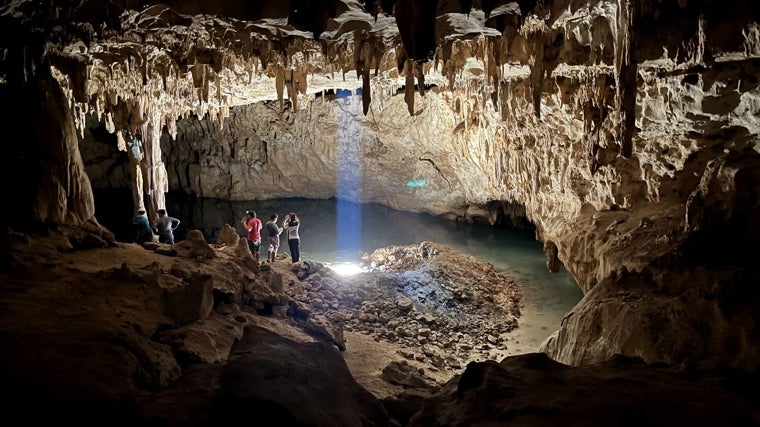The mystery of the Mayan collapse: eight droughts in 150 years accelerated the decline of the great civilization

Between 750 and 950 AD, one of the most puzzling archaeological events in history occurred in the lowlands of Mesoamerica: the Maya , who dominated the region, almost suddenly stopped building monuments. Not only that: southern cities, built of limestone, were abandoned. This great civilization moved north, losing much of its influence. Many theories have been put forward about that collapse: climate change, overexploitation of resources, internal conflicts... Now, stalagmites from a Mexican cave appear to shed light on the mystery, revealing eight long droughts that coincided with the time of the collapse, some of them even lasting more than a decade. The conclusions of the study, led by researchers from the University of Cambridge, have just been published in the journal ' Science Advances '.
“This period of Maya history has fascinated researchers for centuries,” says Daniel H. James, lead author of the paper who led the research during his PhD in Cambridge’s Department of Earth Sciences. “Multiple theories have emerged about the cause of the collapse, such as changes in trade routes, warfare, or severe droughts , based on archaeological evidence left behind by the Maya. But in recent decades, we’ve begun to learn more by combining archaeological data with quantifiable climate evidence.”
The hypothesis that lack of water was a determining factor in the decline of the southern Maya is not a new theory. Beginning in the 1990s, cross-referencing climate records with date engravings on temples revealed clues that the debacle and droughts could be linked. The new development is that researchers have used the chemical traces contained in stalagmites from a cave in northern Yucatán, near the Mayan temple of Chichén Itzá, to obtain much more precise data on how these periods affected the Maya civilization.
Stalagmites form when water drips from a cave ceiling, and the minerals contained in that dripping liquid accumulate, forming deposits on the floor. By dating and analyzing the oxygen isotope layers within the stalagmite, researchers extracted very detailed information about the climate during the Terminal Classic period, the name given to this episode in Maya history. This wasn't the first time water deposits had been examined: previous research had measured oxygen isotopes in nearby lakes, but these sediments don't contain enough detail to accurately determine the climate conditions in a given year at a specific site.
Stalagmite analyses have also been conducted previously, but to date, they have only been able to gather data on average annual rainfall, not on specific periods within that year. "Knowing the average annual rainfall doesn't reveal as much as knowing what each rainy season was like," James points out. "Whether there was a drought or not is what determines the success or failure of the crops."
Thus, according to the team's new analysis, between 871 and 1021 AD, there were eight droughts during the wet season that lasted at least three years. However, the longest recorded drought lasted 13 years. A period so long that, even with the water management techniques the Maya possessed, it would have had a significant impact on society.
 The cave in the Yucatan Peninsula where the analyses were carried out
Mark Brenner
The cave in the Yucatan Peninsula where the analyses were carried out
Mark Brenner
When comparing this data with the records of dates written in hieroglyphics by the Maya, the information matches: monument construction and political activity recorded in inscriptions at various Maya sites, including the temple at Chichén Itzá, halted at different times during these periods of drought indicated by stalagmite analysis. "This doesn't necessarily mean that the Maya abandoned Chichén Itzá during these periods; but they likely had more immediate concerns, such as tending the crops they depended on," James notes.
Researchers say the stalagmites from this and other caves in the region could be vital to piecing together the puzzle of the Terminal Classic period. “In addition to what stalagmites can tell us, they could also shed light on, for example, the frequency and severity of tropical storms,” notes the lead author. “As a case study for detailed comparisons between climate and historical data, it’s exciting to be able to apply methods usually associated with the more distant past to relatively recent history.”
ABC.es





